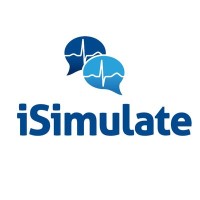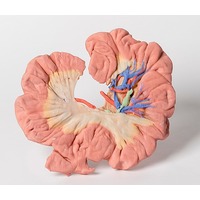3D Printed Anatomical models of the Ileum and Jejunum
See below our series of 3D printed Abdomen models which are highly anatomically accurate and perfect for students to study the finer details of the Abdomen. Our two models below are specific regions of the Ileum and the Jejunum. These models are based on real life cadaveric specimens derived from CT scans and are the most accurate anatomically models on the market.
This category is empty! Please try another category or use our search function to find what you are looking for. If you require further assistance please contact us.
Medical professionals can refer to the abdomen with many different terms; this includes the belly, stomach, tummy or midriff. However, the abdomen is the only term that correctly describes the part of the body situated between the chest and pelvis. Below, you will find more information about the abdomen and its contents.
The Abdominal Cavity
The abdominal cavity is the term used to describe the space where the contents of the abdomen are situated. It stretches from the thorax and ends at the pelvic brim of the pelvis area. Naturally, there is more to it than that, because the abdominal cavity contains numerous important organs used for digestion. It also holds a series of muscles, which relate to movement.
The Contents of the Abdomen (Organs)
Our abdomen contains many vital organs and structures, which for the majority are tubelike organs such as the digestive tract. It contains the stomach, small intestine and the colon with the appendix. It also contains the gallbladder, pancreas, spleen, kidneys and adrenal glands.
For all these organs to function, they require a good blood supply. Therefore, several important blood vessels also run through the abdomen; this includes the aorta and the inferior vena cava.
Depending on the anatomists you speak to, some anatomists will declare the urinary bladder, uterus and the fallopian tubes as part of the abdomen. However, other anatomists will consider them as a part of the pelvic area.
Since this may be a little confusing, here is a summary of the organs you can find inside the abdomen:
- Digestion-related organs: stomach, large intestine, cecum, appendix and small intestine;
- Accessory organs: gallbladder, pancreas and liver;
- Organs and structures of the urinary system: kidneys, ureters (please note that the latter is technically a part of the retroperitoneum, which is situated outside the peritoneal membrane – the extensive membrane covering some organs in the abdominal area.
- Other organs: spleen.
The Contents of the Abdomen (Muscles)
As mentioned earlier, the abdomen also contains several important muscles. These muscles can be divided into three general areas: the external oblique, internal oblique and transverse abdominal.
The external oblique is the largest of the three muscles in the abdomen. It is the outermost muscle, which means that trained athletes may see their external oblique in the form of the six-pack. The external oblique is used to pull the chest down and exercise compression on the abdominal cavity.
A muscle that lies beneath the external oblique is the internal oblique, the second muscle mentioned in our overview. This muscle performs two major functions. It assists the respiratory system by reducing the volume of the chest cavity when you exhale. So, when the wall cavity is pulled down, the lung volume is increased. The internal oblique is also responsible for pulling the ribcage and midline in the direction of the hip and the lower back. Therefore, the internal oblique makes torsional movement possible.
The transverse abdominal muscle is the third and last major muscle of the abdominal region. It has obtained its name due to the direction of the muscle fibres. The muscle has numerous functions; this includes compressing the ribs and organs, and supporting the thorax and the pelvis.
Conditions That Could Affect the Abdomen
Gastrointestinal diseases are the types of conditions that usually affect the abdomen, since these conditions influence the abdominal organs situated within the abdomen. Therefore, conditions that are commonly associated with the abdomen affect the following organs and structures: stomach, liver, pancreas, gallbladder and bile duct.
Another common problem that could occur in the abdominal region is a condition called abdominal obesity. When a patient suffers from abdominal obesity, they suffer from a build-up of abdominal or visceral fat between the abdominal organs. When a patient is diagnosed with this condition, it is believed they have a higher chance of problems such as heart disease, asthma and type 2 diabetes. Therefore, it is important for men and women to maintain a healthy BMI (Body Mass Index).
Men and women can also experience so-called abdominal trauma; this problem occurs when an injury of the abdomen has occurred. Subsequently, there could also be damage to the organs that lie within the abdominal cavity. When a man or woman experiences an injury of the abdomen, they have an increased chance of blood loss and infection. An injury situated at the top of the abdomen has also been linked to problems such as spleen and liver injuries. Since abdominal trauma could have serious health consequences, it is important to make an emergency appointment with a doctor or visit the local emergency department.
To determine a problem in the abdominal region, a medical professional can use a series of tests. Common tests that could be executed on a patient include an endoscopy, colonoscopy, sigmoidoscopy, enteroscopy and esophagogastroduodenoscopy. However, most doctors do a physical examination before they refer their patient to a specialist for such tests.





















